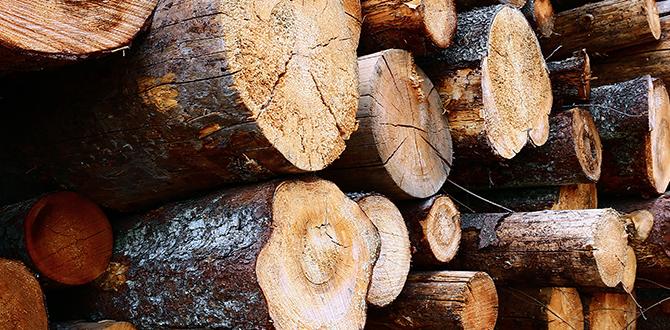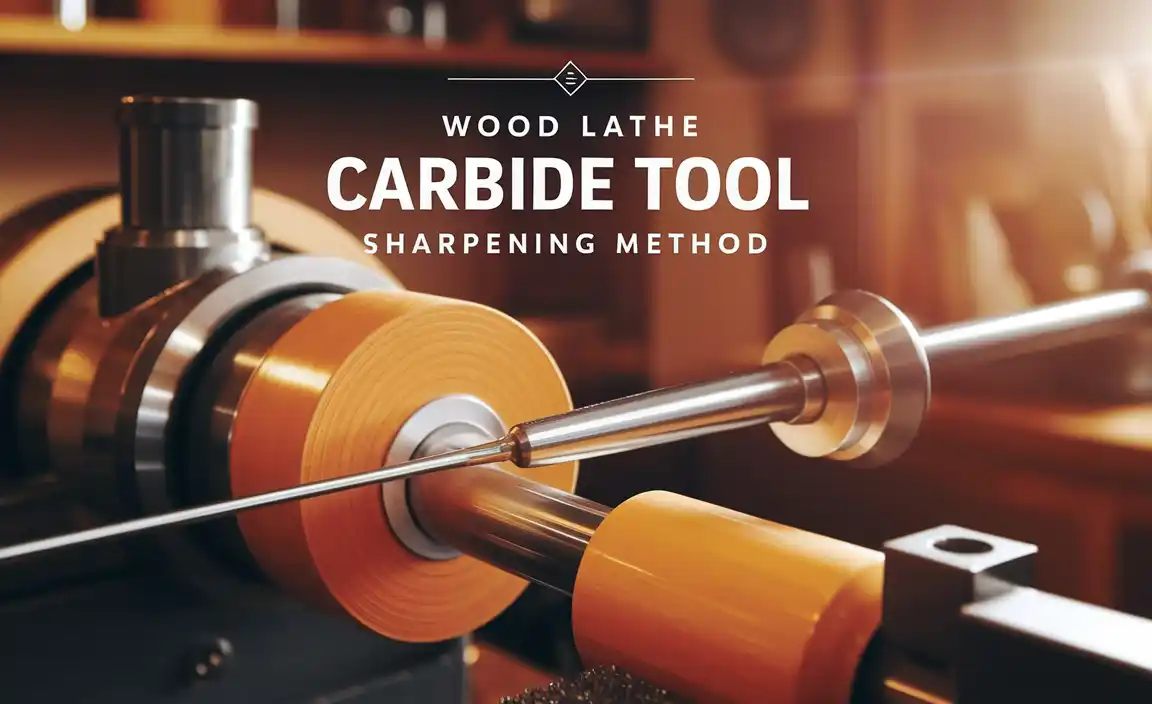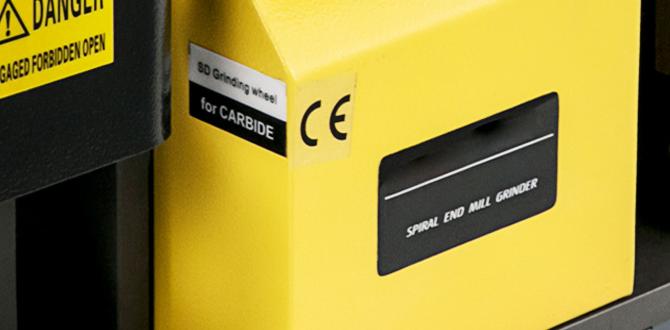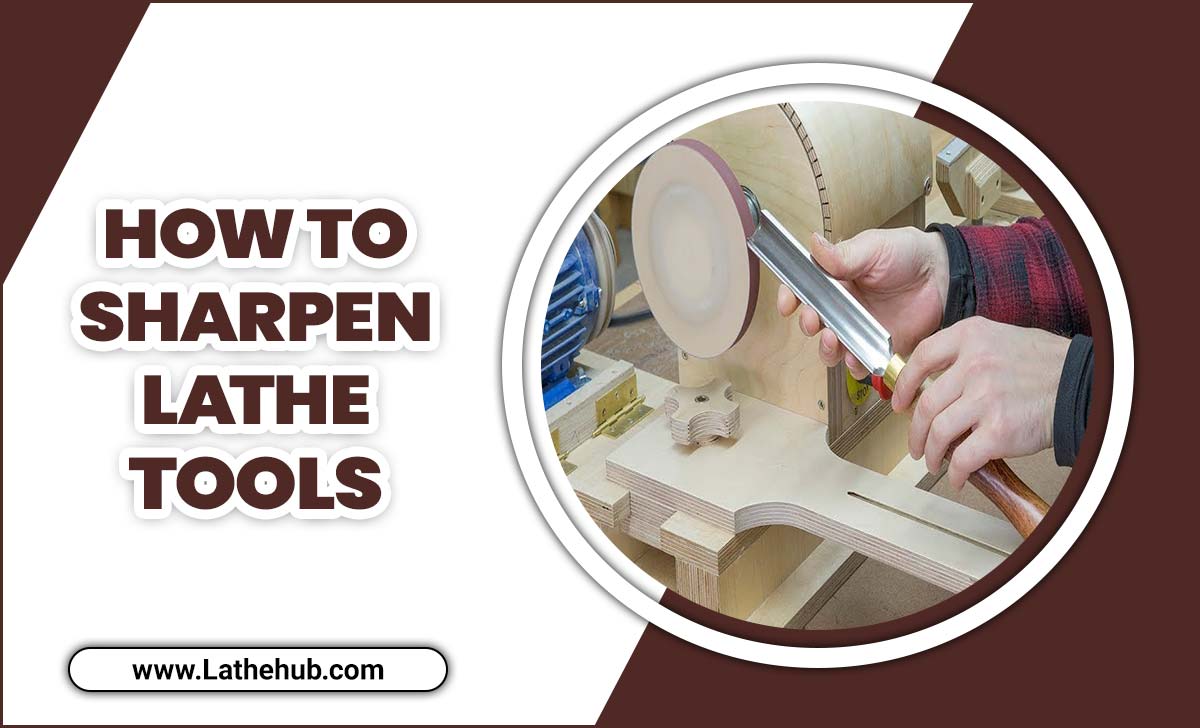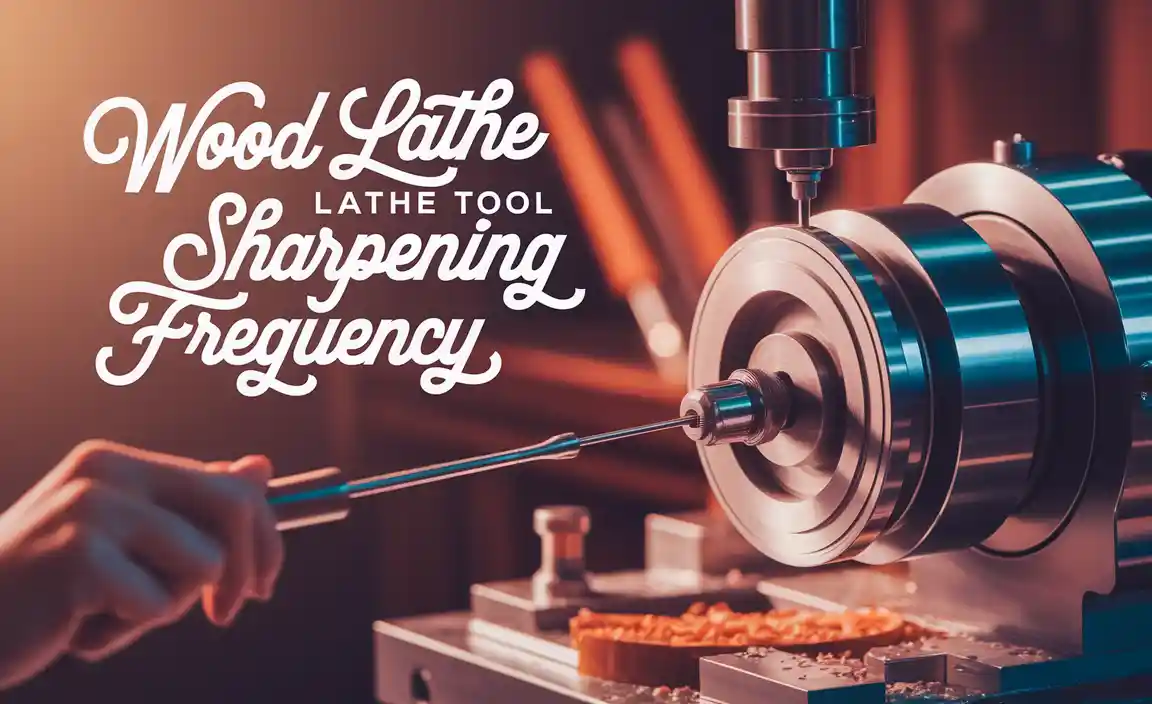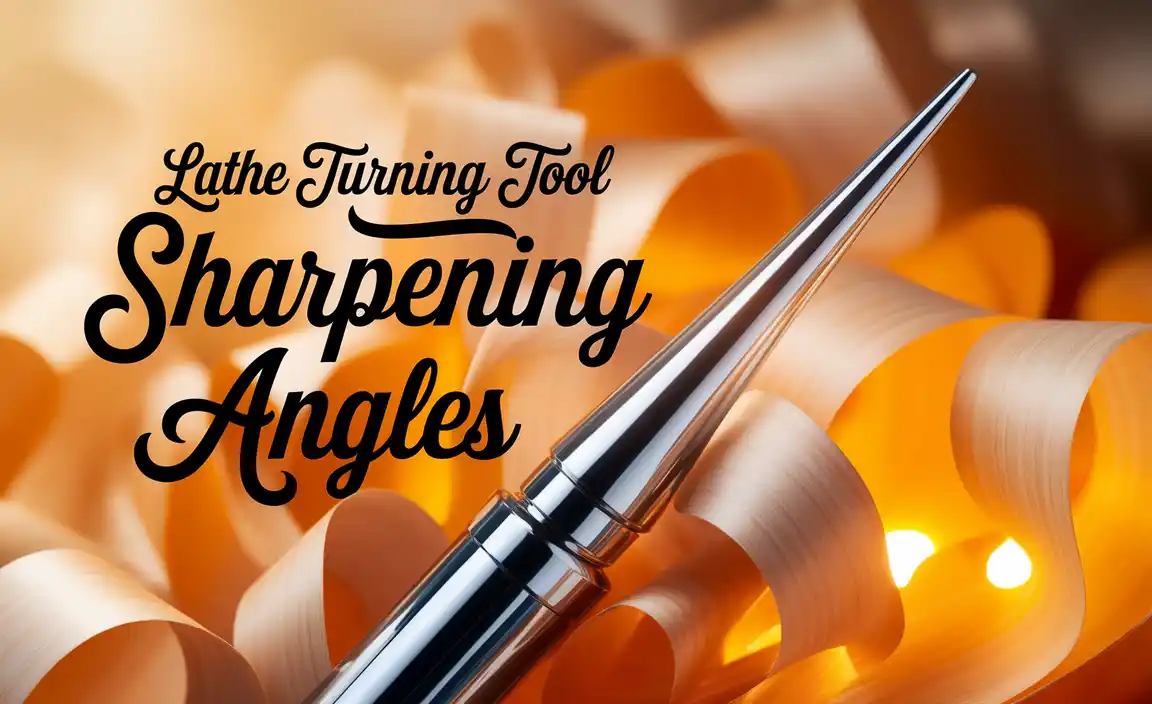Lathe tools are essential for any metalworking or woodworking project, allowing for precise shaping and cutting of materials. While various types of lathe tools are available, carbide lathe tools are known for their durability and sharpness. However, like any cutting tool, carbide lathe tools can dull over time and require sharpening to maintain their effectiveness.
We will explore the step-by-step process of sharpening carbide lathe tools, from understanding carbide properties to the different sharpening methods and techniques. So, let’s dive into carbide lathe tools and sharpening techniques and gain the knowledge and skills to keep your tools in top shape for all your machining and woodworking needs.
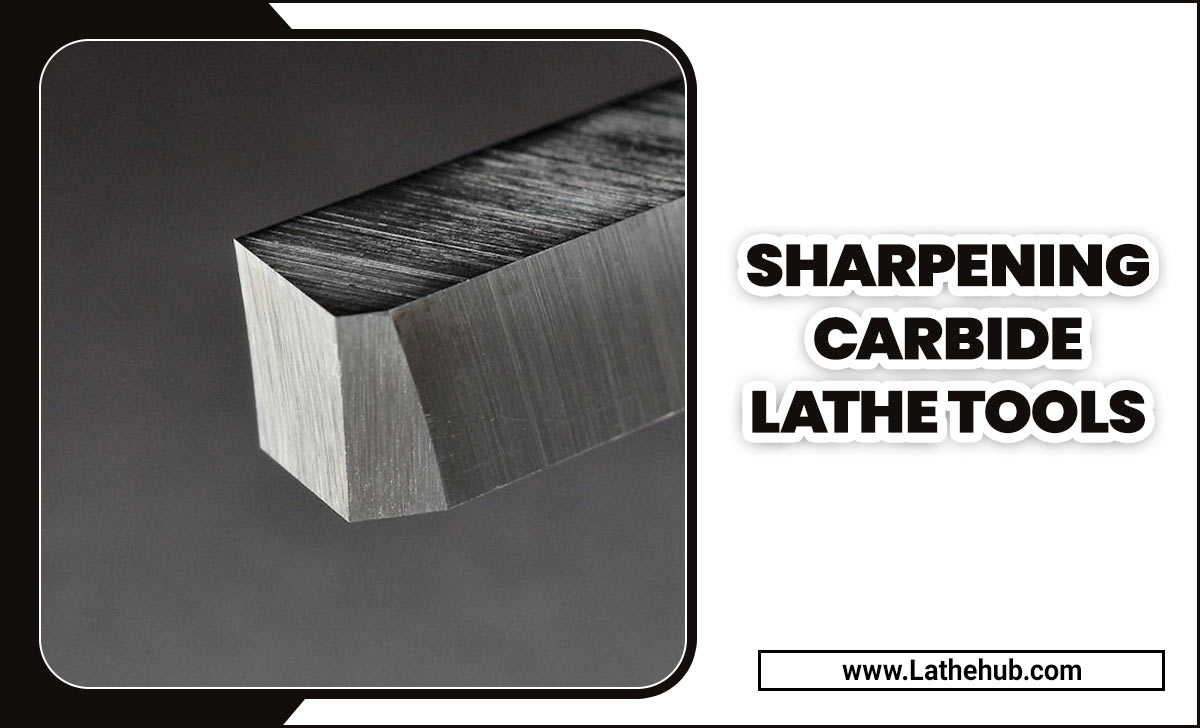
What Are Carbide Lathe Tools?

Carbide lathe tools are cutting tools used in machining operations. They are made from a combination of tungsten carbide and other materials, which gives them exceptional hardness and durability. These tools are commonly used in metalworking industries for shaping, forming, and finishing operations.
Carbide lathe tools offer superior performance and longer tool life compared to traditional high-speed steel tools. They are highly versatile and can be used in various lathe applications, including turning, facing, threading, and grooving. Overall, carbide lathe tools are essential tools in precision machining processes.
Understanding The Need For Sharpening
Regularly sharpening carbide lathe tools, such as using a green wheel and carbide bit or inserts, is crucial for optimal performance. By sharpening these tools, several benefits can be achieved. Firstly, accuracy is significantly improved, ensuring precise cuts and minimizing errors. Additionally, sharpened tools provide smoother cuts, resulting in cleaner and more professional-looking workpieces. Moreover, regular sharpening increases the longevity of the tools, reducing the need for frequent replacements and saving costs in the long run.
Choosing The Right Sharpening Method
There are multiple options when considering the right sharpening method for carbide lathe tools. One method involves using diamond files, which offer excellent precision but can be time-consuming. Another option is bench grinders, which provide a quick sharpening process but may require more skill to achieve the desired factory edge. Alternatively, dedicated sharpening systems with aluminum oxide wheels can balance precision and ease of use. Ultimately, the choice depends on cost, personal preference, and the precision required for the task.
8-Step To Sharpening Carbide Lathe Tools
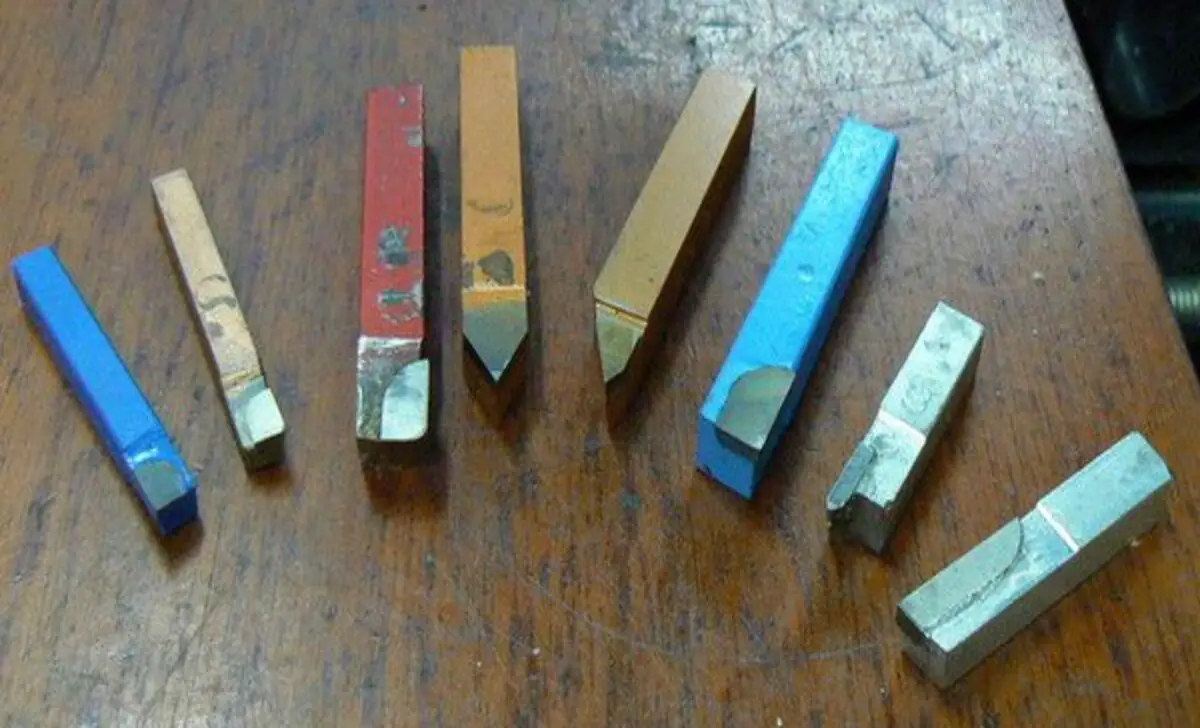
Sharpening carbide lathe tools ensures optimal performance and longevity in machining operations. Carbide, known for its exceptional hardness and resistance to wear, is a popular choice for lathe tools due to its ability to withstand the high temperatures and pressures encountered during cutting. However, like any cutting tool, carbide lathe tools will eventually dull and require sharpening to maintain their cutting efficiency. Here, we will provide you with 8 steps for sharpening-carbide lathe tools.
1. Gather The Necessary Materials
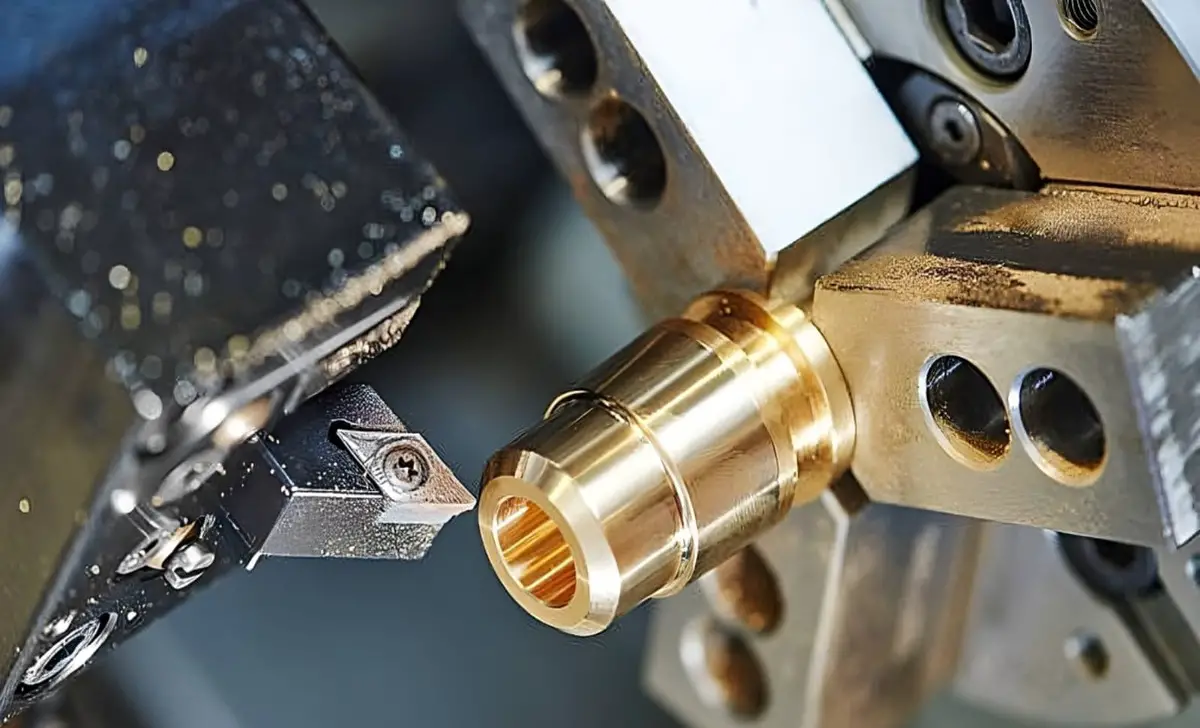
You will need a diamond or a green silicon carbide wheel for sharpening carbide tools, a flat tool rest, safety goggles, and a dust mask. However, this hardness also means carbide tools are more difficult to sharpen than traditional steel tools. This is where the diamond wheel or green silicon carbide wheel comes in. These wheels can grind and shape carbide materials due to their superior hardness and abrasive properties.
2. Mount The Wheel
Install the appropriate wheel on your bench grinder or sharpening machine. Before installing the wheel on your bench grinder or sharpening machine, it’s important to determine the type of wheel that is required for the specific task you will be performing. There are various types of wheels, each designed for different purposes and materials. Make sure it is securely mounted and aligned properly.
3. Adjust The Tool Rest
Set the tool rest at the correct angle for sharpening your carbide lathe tool. This angle can greatly impact the sharpness and longevity of your tools, so it is important to get it right. This angle may vary depending on the tool, so refer to the manufacturer’s recommendations or consult a sharpening guide. Many sharpening guides are available online to provide the necessary information if you cannot access the guide.
4. Put On Safety Gear
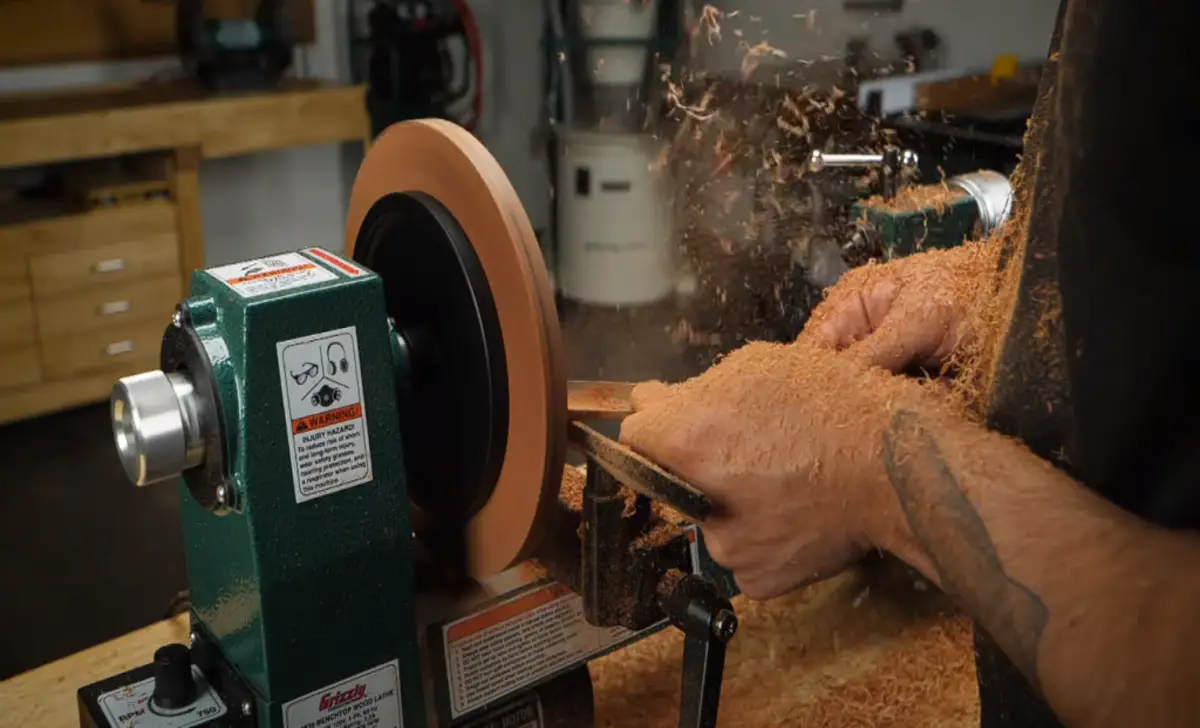
Safety goggles are one of the most important equipment for eye protection. Wear safety goggles to protect your eyes from flying debris and a dust mask to avoid inhaling fine particles. These specialized goggles are designed to cover the entire eye area and provide a barrier against any potential hazards.
5. Start The Grinder
Turn on the grinder and let it reach its full speed before beginning the sharpening process. First, you want to ensure the power switch is off to avoid any accidents. Once you unplug the grinder, take a moment to inspect the tool for any damages or wear and tear. This is an important safety measure that should not be overlooked. After inspecting the grinder, plug it in and locate the power switch. Turn it on and wait for the grinder to start up.
6. Position The Tool
Hold the carbide tool firmly against the tool rest, ensuring it is in contact with the grinding wheel at the correct angle. This ensures safety and plays a significant role in the quality of the finished product. The rest supports the tool, allowing steady and controlled movements while grinding. Without proper contact with the tool rest, the carbide tool may become unstable and cause unwanted accidents.
7. Sharpen The Tool
Gently move the tool back and forth across the grinding wheel, maintaining a consistent angle and applying light pressure. Don’t overheat the tool, as excessive heat can damage the carbide. Hold the tool at a consistent angle against the grinding wheel, usually around 20-30 degrees. This angle may vary depending on the sharpened tool, so referring to the manufacturer’s guidelines for specific instructions is important. Maintaining this angle throughout the sharpening process is crucial to achieve a uniform and precise edge.
8. Check For Sharpness:
Periodically stop grinding and inspect the edge of the tool. This helps ensure that the tool performs at its best and can prevent potential accidents. So, take a moment to pause your grinding and carefully inspect the tool’s edge. Look for a clean, sharp edge without any visible chips or imperfections. Continue to sharpen
Different Sharpening Methods Of Carbide Lathe Tools
Carbide lathe tools can be sharpened using various methods. One common approach is using a bench grinder with a diamond wheel to shape the cutting edge carefully. Another method is using a sharpening jig to maintain consistency in the angles. Some machinists prefer using a diamond file or a specialized carbide sharpening stone for touch-ups. Regardless of the method chosen, proper sharpening is crucial for ensuring optimal performance and longevity of carbide lathe tools.
Troubleshooting Common Sharpening Issues

When addressing common sharpening issues, examining challenges such as uneven edges, overheating, or excessive material removal is important. One common mistake is not paying attention to sharp corners, resulting in ineffective sharpening. Another challenge is using low-quality tools like those from
Harbor Freight, which can lead to subpar results. Additionally, rough grinding can cause unevenness and damage to the blade. To overcome these problems, paying attention to details, investing in high-quality sharpening tools, and practicing proper techniques to achieve optimal sharpening results are crucial.
- Sharpen and maintain lathe tools.
- Check and adjust tool angles.
- Set appropriate lathe speed and feed rate
- Clean and maintain tools regularly
Tips And Tricks For Effective Sharpening
Several tips and tricks can enhance the effectiveness of sharpening techniques. First and foremost, it’s important to maintain a steady hand throughout the process. This will ensure you have control over the speed grinder and can achieve precise sharpening. Additionally, applying consistent pressure while sharpening with boron carbide can help to achieve optimal results. Lastly, it’s crucial to check for sharpness using specific techniques, such as testing the edge on a piece of paper or feeling for a burr.
- Use a Diamond grinding wheel or diamond-coated wheels
- Inspect the tool for chips or damage and use the diamond file for repairs
- Maintain a consistent grinding angle of 2030 degrees
- Consider the wet grinding method with water
Maintaining Sharpened Tools
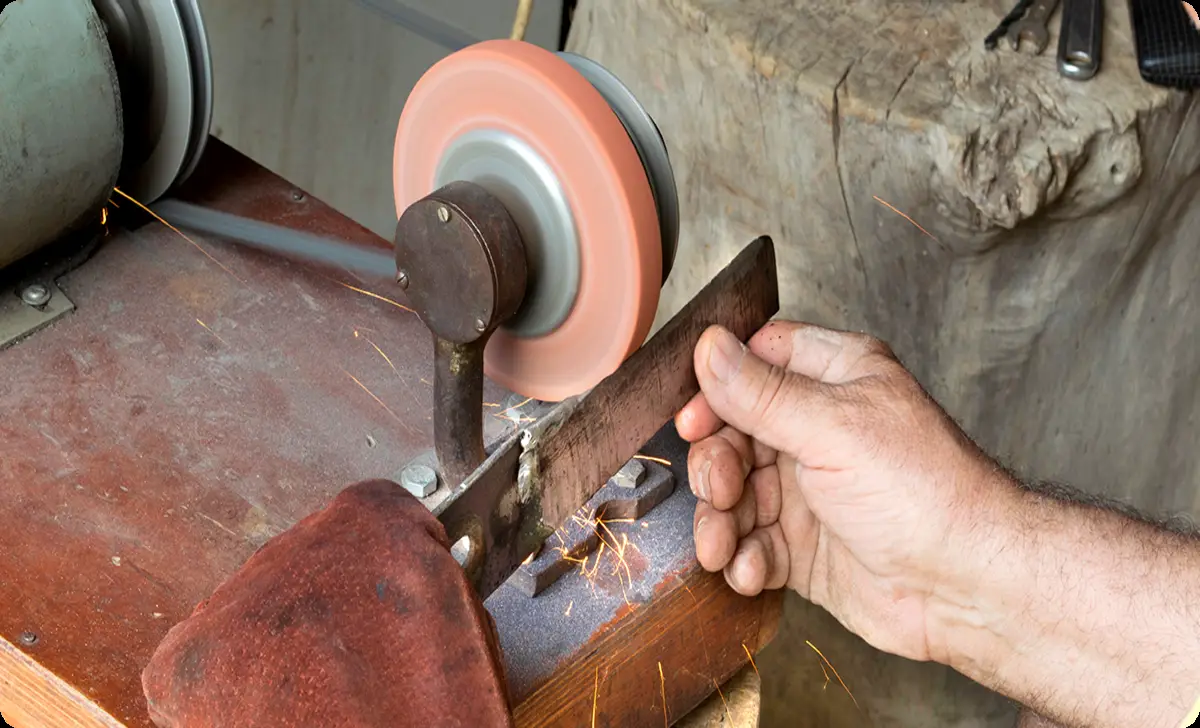
Maintaining the sharpness of carbide lathe tools is crucial for optimal performance. Proper tool storage and care play a vital role in this. Storing tools in a clean and dry environment, away from moisture and contaminants, helps prevent corrosion and dulling. Regular honing of the tool edge removes any burrs and ensures precision cutting. Additionally, periodic re-sharpening is necessary to restore the tool’s original sharpness, prolonging its lifespan.
- Inspect and clean carbide lathe tools regularly to remove debris
- Sharpen cutting edges using diamond or silicon carbide sharpening stone
- Follow the manufacturer’s guidelines for sharpening angles and techniques
- Consider using a grinding wheel designed for carbide tools for precise sharpening
Conclusion:
Sharpening carbide lathe tools may seem daunting, but it can be easily accomplished with the proper technique and tools. Remember the importance of safety and precision when handling these tools, and always follow the manufacturer’s instructions. You can achieve a sharp and efficient cutting edge on your carbide lathe tools with practice and patience,
producing high-quality and precise work. However, as with any cutting tool, the sharpness of carbide lathe tools will eventually wear down with use, and they will need to be sharpened to maintain their effectiveness. As with any skill, practice makes perfect, so don’t be afraid to continue honing your sharpening skills for optimal results.
FAQ:
1.How Do You Grind Carbide Tools?
Diamond wheels grind carbide tools due to their extreme hardness. The process involves shaping and sharpening the tool using a grinding wheel. Coolants may be handy to prevent overheating. Skilled operators ensure accurate grinding.
2.What Is Carbide Tool Grade?
Carbide tool grade refers to the classification or quality of carbide materials used in cutting tools. It indicates the carbide’s hardness, toughness, and wear resistance, which are important factors in determining the tool’s performance and durability.
3.What Is Carbide Tool Steel?
Carbide tool steel is a type of steel that contains high levels of carbon and other alloying elements, such as tungsten, chromium, and vanadium.
4.What Is Grit Sharpening?
Grit sharpening is a process of refining or improving one’s determination, perseverance, and resilience. It involves developing the mental toughness and strength to overcome challenges and setbacks.
5.What Grit To Sharpen Carbide?
The recommended grit to sharpen carbide is typically between 180 and 220.


